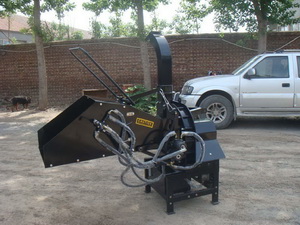Wood Chipper Blades
A good wood chipper needs sharp blades that can provide the kind of precision cutting that these machines demand. And for the industrial models, they have to be able to withstand the continuous cutting that wood chipper blades are subjected to for they can sometimes run for as long as 10 hours per day and maybe even more. The key thing to remember is that like most machinery, you have to take proper care of your wood chipper blades to ensure excellent performance and prevent accidents.

How Long Do They Last?
While this would largely be dependent on several factors including the material used for wood chipper blades as well as what it is being used for (size and type of wood), each side of the blade is roughly good for 50-60 hours of use. The angle at which the wood chipper blades are placed also play an important role in determining the longevity of the knives or blades. The 90-degree angle on drum style machines produce more knife wear as compared to other styles which will allow you to use your wood chipper blades longer. You also have to keep in mind that tougher wood like oak and maple will put a much bigger stress on your wood chipper blades than the softer varieties like pine.
Regular Maintenance
To be able to prolong the lifespan of your wood chipper blades, proper maintenance has to be observed and practiced on a regular basis. Below are the tasks that you need to complete during daily knife inspections to keep your blade in tiptop condition:
- Check each knife for signs of dullness.
- When flipping a knife to the other side, check for chips and cracks and clean out any debris that may have gotten stuck under the knife.
- Check all other knives for chips and cracks on both sides; even those that do not need to be flipped. Using a chipped or cracked knife is dangerous and can cause accidents and will also damage the wood chipper.
- Ensure that all knives are tightened to the torque specifications provided by the manufacturer. If done improperly, the knife can become wedged underneath or pushed out to a point where it will strike the anvil.
And of course, you must always keep your personal safety in mind when performing these tasks. Always wear protective gloves and use lock pins and drum wedges where needed.
When to Replace Blades
The appearance of a chip or crack is not necessarily a sign that your wood chipper blade or knife needs to be thrown away. If the chip or crack is less an inch, it can still be sharpened and used inside the machine. When doing this, make sure that only an industrial knife grinder is used as this machine will keep the knife cool. A knife can be sharpened up to three times on each side before it is no longer suitable for use in a wood chipper. When putting in the replacement blades, be sure to follow the manufacturer's instructions to the letter to avoid any accidents.
